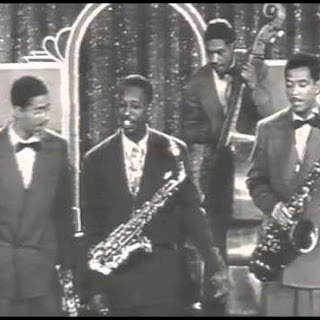Skeets Tolbert played clarinet and saxophone, he was also a vocalist and bandleader. His nickname "Skeets" was short for "Mosquito." Not sure why. But it stuck with him throughout his life. He composed and arranged a great number of tunes that would become hits for others, including names like Nat King Cole, Count Basie and Louis Jordan.
Skeets joined "Taylor's Dixieland Serenaders" in 1929, where he had his first known recording in 1931, as a vocalist and on alto sax. In 1934, he moved on to play with Charlie Alexander before joining the house band at the New York night club, The Savoy Ballroom.
In 1936 he played alto sax along side the legendary Fats Waller. The time he spent with Waller ended up being highly influential on Tolbert's writing and arranging style.
Something I was surprised to learn was that in 1937, Skeets played in a band with famed Olympic Athlete, Jesse Owens. I had no idea Jesse Owens was a musician.
In 1939, Skeets formed his own band and recorded under the name "Tolbert's Gentlemen of Swing." Babe Hines and Yack Taylor were featured female vocalists. He rarely used a single male lead vocal in his music. He also used elements of vaudeville in many of his songs along with darker lyrics. None of his songs ever charted or became standards but were intended for dancing in nightclubs and living rooms. He recorded with this band on the Decca Records label.
Tolbert also filmed his share of Soundies. In 1944, the band recorded four Soundies of the tunes "No No Baby", "'Tis You Babe", "Blitzkrieg Bombardier", and "Corn Pone." Skeets eventually left the music business by the late 40's to pursue a career of teaching and lived to be 91 years old.
Watch: "Blitzkrieg Bombardier" by Skeets Tolbert and His Gentlemen of Swing from 1944
You can hear "Skeets Tolbert and His Gentlemen of Swing" right here on Swing City Radio.

























